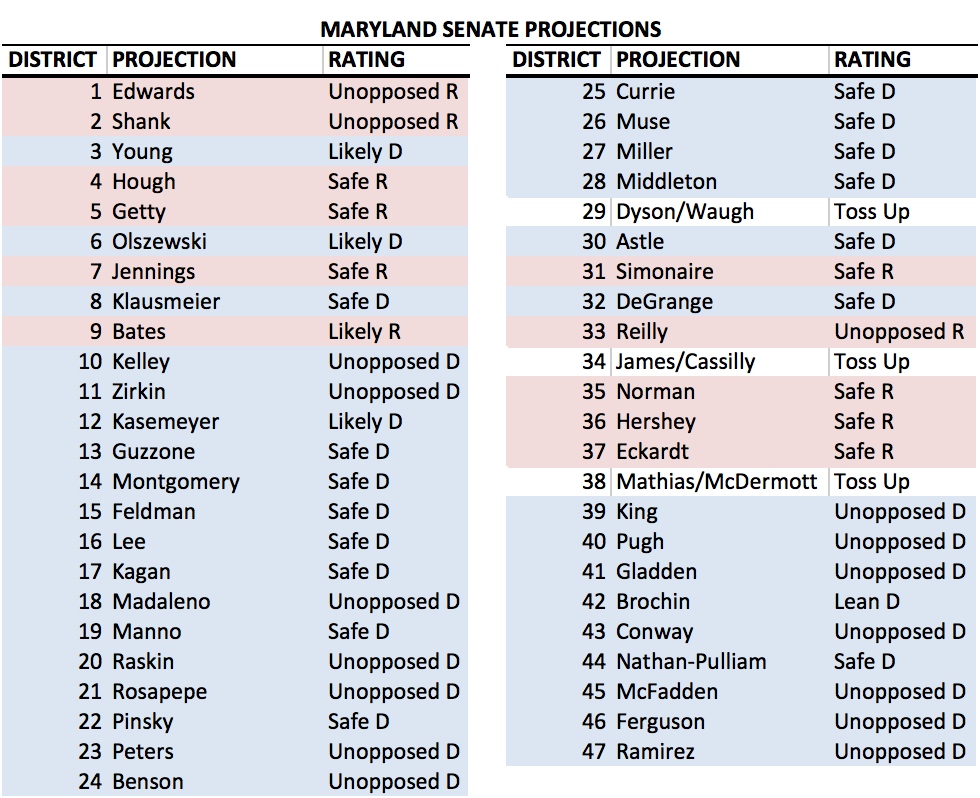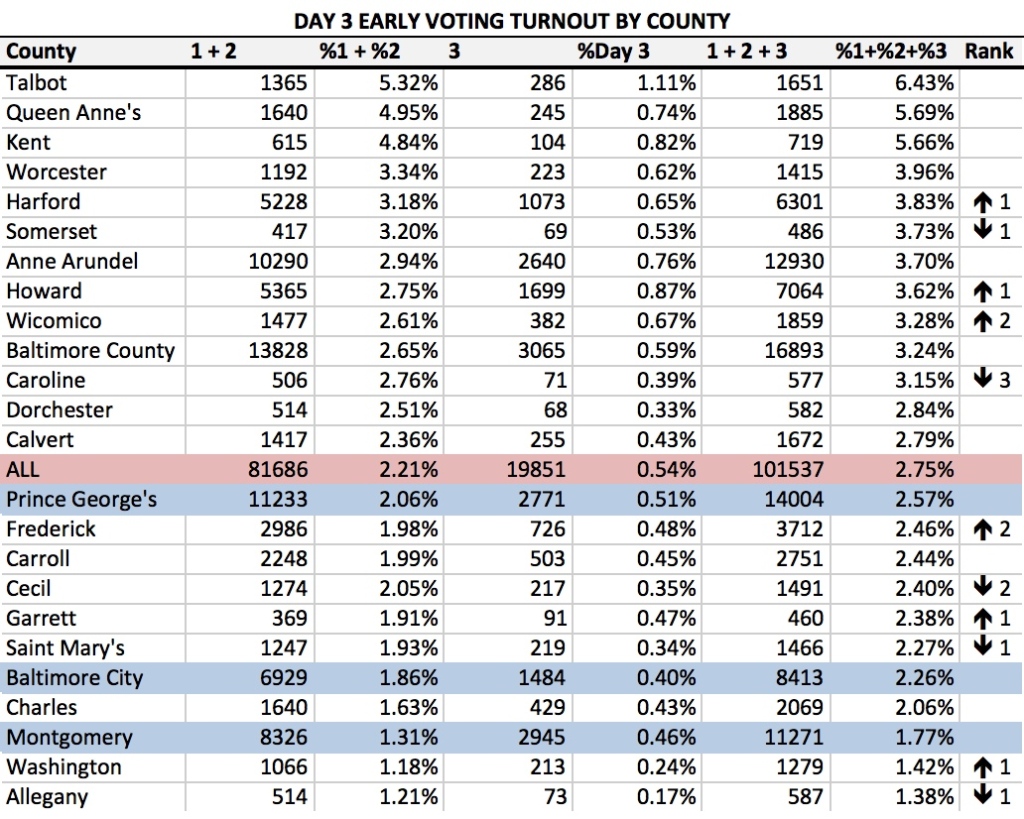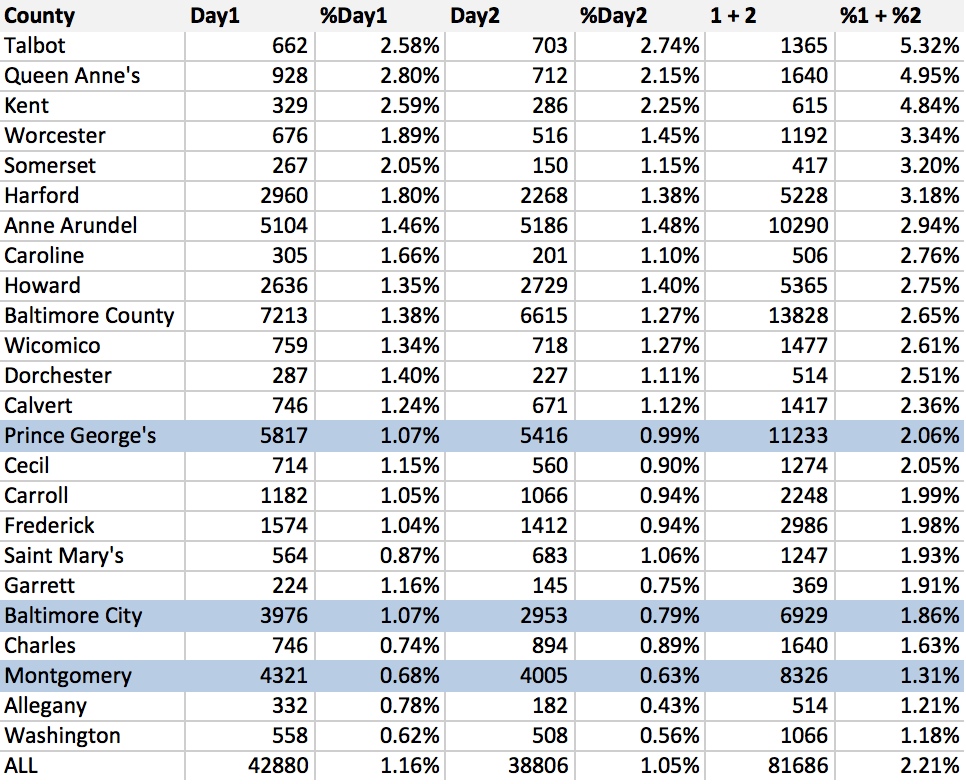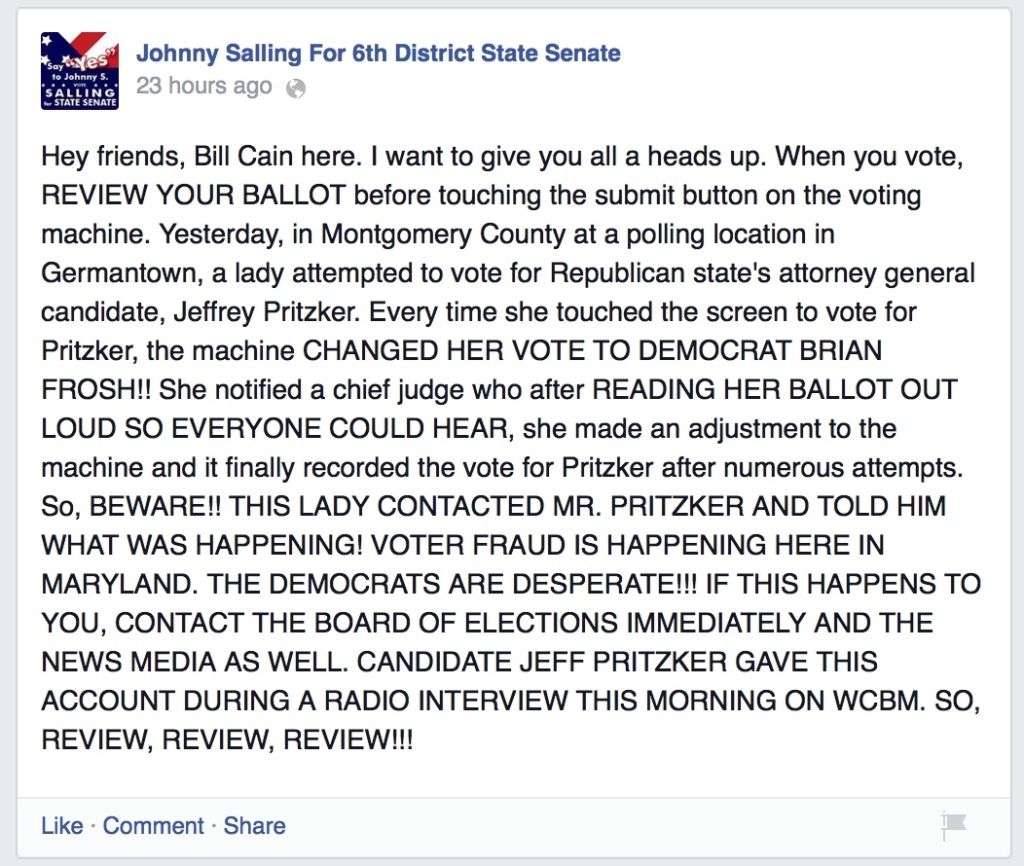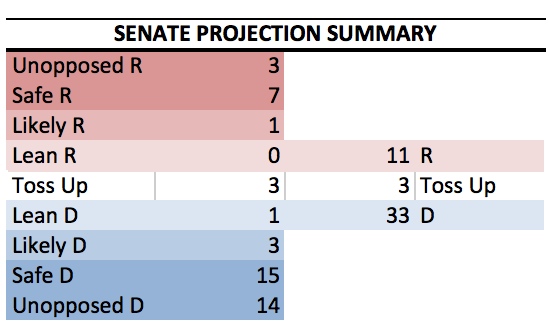 ratings for individual races are below
ratings for individual races are below
Looking over this year’s Senate races in Maryland reveals no threat to Democratic dominance. Republicans have no chance of even winning enough Senate seats to sustain a gubernatorial veto should Republican Nominee Hogan upset Lt. Gov. Anthony Brown.
The Democrats start with a built-in advantage with the 20 safe districts located in the big three Democratic counties of Montgomery (D15-20, D39), Prince George’s (D21-6, D47) and Baltimore City (D40-41, D43, D45-6). Add in the extremely safe seats in Baltimore County (D10 and D44), Charles (D28), and Howard (D13), and the Democrats reach a majority without breaking a sweat.
However, the Democratic advantage extends beyond structural. The Democrats demonstrate an ability to fight hard and win seats on Republican turf. Republicans don’t exhibit the same ability, which is why virtually all of the toss-up races are seats that Republicans should win but might not due to the strength of Democratic candidacies and support for them.
Here are the top four races to watch:
1. Mathias (D) v. McDermott (R), Toss Up
Incumbent Sen. Jim Mathias has a real fight on his hands to hold District 38 due to a challenge by Del. Mike McDermott in a race profiled earlier this year. Based on the district’s strong Republican lean, Mathias ought to lose but this former OC mayor is a born campaigner and has a huge financial advantage.
2. Dyson (D) v. Waugh (R), Toss Up
Roy Dyson has a resilience rare in politics, holding this seat since 1994 after losing his congressional seat in 1990 following a scandal that attracted national attention. Due to an increased naval presence, St. Mary’s Republican lean keeps getting stronger–Romney won 58% of the major-party vote–which leaves Dyson’s hold on it more precarious. Conservative Democrat Dyson has his hands full in his rematch against Steve Waugh, who came within 3 points of taking District 29 in 2010.
3. James (D) v. Cassilly (R), Toss Up
Sen. Nancy Jacobs (R) has decided to retire and Democrats have high hopes of taking this Harford County seat. Democrats did their best to carve out as Democratic district as possible in south Harford though District 34 still remains Republican territory. But Del. Mary-Dulany James has won elections here since 1998. She campaigns hard and is better funded than former Bel Air Mayor and Harford Councilmember Bob Cassilly.
4. Brochin (D) v. Robinson (R), Lean D
Sen. Jim Brochin has far more money than his Republican opponent, Tim Robinson, and is an indefatigable campaigner. I would rate the district Likely D except that Brochin has a lot of new Republican territory in this reshaped version of District 42. Still, he could be in trouble if a Republican wave hits hard here.

